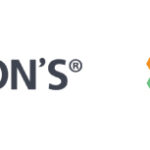Project Scope Management is an important tool to improve projects. Most scope creep occurs because of lack of agreement among stakeholders, an inconsistent understanding, or lack of sufficient analysis in development of the product or solution scope.
The cornerstone to agreeing upon and managing project scope is to focus on facilitating good communication that engages your sponsor and stakeholders in conversations at appropriate phases of the project. Collaborating with business stakeholders and the technical team to create a clear scope definition helps mitigate the risk of scope creep.
So, what is scope and scope creep and why does it happen?
Managing Project Scope
- What is Scope and Scope Creep?
- Why Do Projects Fail?
- Why Prevent Scope Creep?
- How to Improve Project Scoping?
- Mastering Project Scope Techniques
What is Scope and Scope Creep?
Project scope is the work the project team will do to deliver the product which is the result of the project. It also encompasses the product scope – the product deliverables, features, and functions. Project scope includes the planning, coordination, and management activities that ensure the product or service is achieved. Scope creep refers to features, functionality or requirements increasing or varying from what was planned.
Why Do Projects Fail?
There are many reasons why projects fail. Here are some common examples related to scoping:
Wrong Project occurs when someone gets an idea, and the company runs with it with very little insight, analysis, scoping, or requirements. Doing the scoping activity as early as you can helps the organization be sure about the value of the work. For example, some studies suggest that 80% of the software features in our work packages are not used regularly. That suggests we are doing some things we really don’t need to do because people aren’t using the functionality.
Wrong Solution can happen when an organization has a business problem or an opportunity, but they only focus on the first solution identified. For example, the sponsor has a new product and requests a system change to accommodate. However, the product is so different that the system change solution does not meet the product needs.
Poor Requirements are often sighted as a cause of project failure. Defining scope, whether in a scope statement, a project charter, or a diagram, becomes your first set of requirements. Here you define the scope, the boundaries, the interfaces, and who is involved.
Poor Scope Definition can happen when you tackle large, complex projects, and it is difficult to define the work. It can mean that stakeholders may be uncertain about their original need. It may also be that you don’t have a clear agreement around scope before you start or once the project starts stakeholders want to add to the project scope, as discussed earlier. Having proven tools to help define and manage project scope is essential.
Why Prevent Scope Creep?
When a team works on product features and functionality outside of the originally defined scope, it could extend the agreed upon schedule, budget, and resources. It could also lead to less time for the previously approved work. Other possible impacts could mean certain features may not get completed or the team becomes distracted by the varying scope and loses site of the intended solution. Any one of these scenarios could lead to project failure.
How To Improve Project Scoping?
Most projects start because a stakeholder or sponsor identifies a business opportunity, problem, or constraint. To improve the project scoping, a business analyst should be involved to define business value, a technical expert should be consulted about feasibility and cost of the idea and the project manager should be consulted about resources needed, risks, and expected timeframes for completion and transition before any word is funded.
At the start of a new project or initiative, Scoping and analyzing the business need involves critical thinking about current business processes, information, policies, and people. This includes:
- Understanding the current environment or “context” within which the business operates and how work is being done.
- Analyzing the stakeholder request, talking with the stakeholders to determine if the requesting stakeholder has identified the root cause of the problem.
- Assessing the cost/benefit analysis of the request to determine if it will bring enough value to the business to outweigh the cost of getting it done.
- Identifying solution options and helping the team to evaluate each option and choose the best one.
- Defining a solution scope to select the best business analysis process to use. This includes understanding the number of stakeholders impacted, the complexity of the solution, the number of interfacing organizations and systems, and the involvement of outside organizations. decide how to approach the work and how formally to define deliverables.
Mastering Project Scope Techniques
The best way to manage scope is to have frequent and appropriate conversations with your stakeholders to reach consensus on scope. It is important to talk about scope and prioritization to get better agreement on the solution boundaries. The more agreement you have the less scope creep you will have later in the project.
Defining and Managing Project Requirements course gives instruction on scoping. Contact us for more details on our instructor-led class schedule. We also offer Business Analysis Fundamentals eLearning which teaches multiple scoping techniques.
Finally, you can also listen to the recorded webinar Three Proven Analysis Tools to Prevent Scope Creep and earn 1 technical PDU.
- Satisfying Stakeholders with Agile Requirements - January 25, 2023
- Business Analysis: The Best Way to Start a Project - March 2, 2022
- Three Proven Ways Analysis Prevents Scope Creep - December 29, 2021






